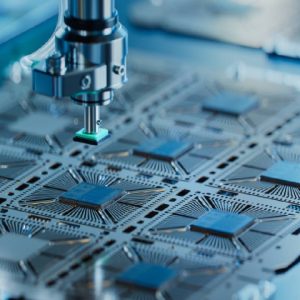
Intel has outlined a series of measures to reduce costs and bolster its chip business as part of a wider turnaround strategy, resulting in an 8% rise in its shares during extended trading.
Chief executive Pat Gelsinger shared these steps in a note to employees, addressing the speculation that followed the company’s second-quarter earnings announcement regarding Intel’s future direction.
In his note, Gelsinger highlighted the need for Intel to capitalise on its recent progress and enhance its competitiveness in the semiconductor market. He shared key points from a recent board of directors meeting, emphasising the need to optimise capital efficiency in its Foundry business and achieve a previously announced $10bn cost-saving target. Gelsinger also emphasised on the importance of refocusing on Intel’s x86 portfolio to support its artificial intelligence (AI) strategy while adjusting its product offerings.
Intel has also expanded its collaboration with Amazon Web Services (AWS), involving a co-investment in custom chip designs. This agreement includes a multi-year, multi-billion-dollar framework covering products and wafers from Intel.
Under this collaboration, Intel Foundry will produce an AI fabric chip for AWS on its Intel 18A process and a custom Xeon 6 chip on Intel 3. This builds on the existing partnership, which includes Intel’s production of Xeon Scalable processors for AWS.
“This framework reflects the power of our ‘better together’ strategy,” said Gelsinger, “anchored on our integrated portfolio across foundry services, infrastructure and x86 products.”
New federal chip funding for Intel
In addition to the AWS partnership, Intel has been awarded up to $3bn in funding under the CHIPS and Science Act for the US government’s Secure Enclave programme. The programme is designed to expand the trusted manufacturing of advanced semiconductors for the US government.
Intel is currently the only US-based company that designs and manufactures leading-edge logic chips. This funding is expected to strengthen the domestic chip supply chain. The semiconductor giant has also announced plans to establish its foundry business as an independent subsidiary within the company. This change is intended to provide external foundry customers and suppliers with a clearer separation from Intel’s other operations.
“Importantly, it also gives us future flexibility to evaluate independent sources of funding and optimise the capital structure of each business to maximise growth and shareholder value creation,” said Gelsinger.
Intel has outlined changes to its manufacturing strategy across Europe, Malaysia, and the US. The company has increased capacity at its facility in Ireland, which will serve as the primary European hub. However, projects in Poland and Germany will be paused for around two years, based on expected market demand.
In Malaysia, Intel will complete the construction of its new advanced packaging facility but will align the commencement of operations with market conditions and the utilisation of existing capacity.
Intel CEO said that the firm remains committed to its US manufacturing projects in Arizona, Oregon, New Mexico, and Ohio and is prepared to scale production in response to market demand as the foundry business expands.
The American chip manufacturer is also changing its product portfolio to improve focus and efficiency. The company aims to maximise the value of its x86 franchise across client, edge, and data centre markets. This includes offering a range of custom chipsets and other products designed to meet specific customer needs.
Intel will also consolidate its Edge, Automotive, and Software and Incubation businesses to create more integrated product development plans and achieve efficiency gains.
The company has also announced measures to reduce its workforce and real estate footprint as part of its cost-cutting strategy. It is progressing towards its goal of reducing its workforce by about 15,000 employees by the end of the year. Additionally, Intel plans to reduce or exit approximately two-thirds of its global real estate holdings by year-end.






